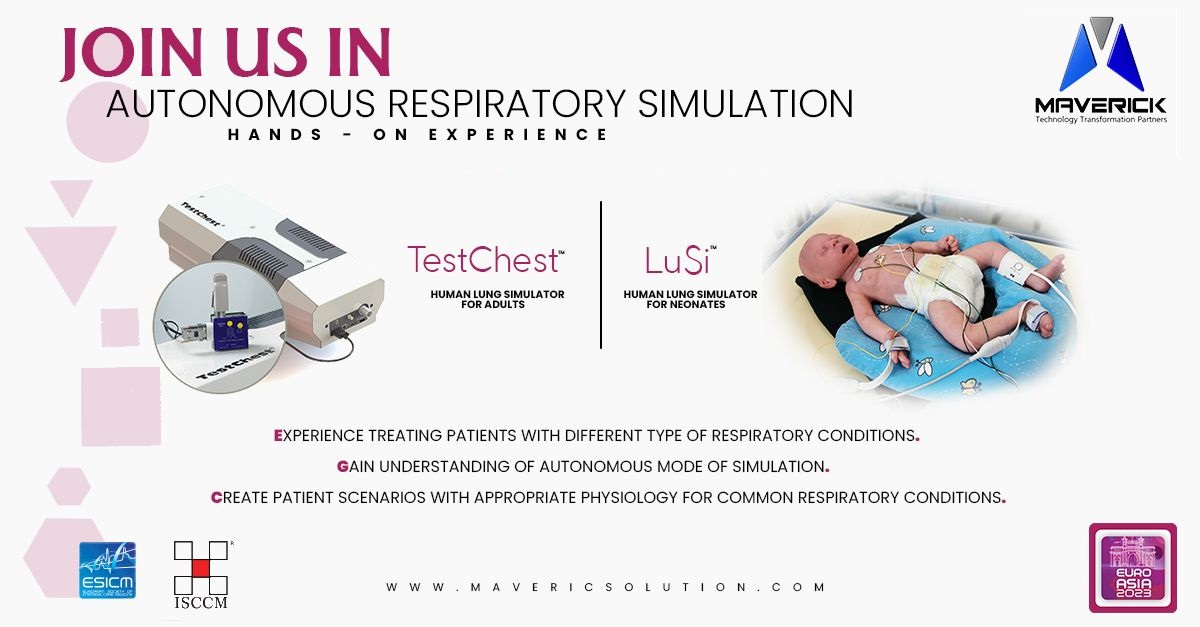What do you understand by simulator and How they saving human lives?
A simulator is a device, software, or system that imitates or replicates real-world situations, processes, or environments to provide a realistic and controlled environment for training, practice, experimentation, or entertainment. Simulators are designed to mimic the behavior and characteristics of the real thing, allowing users to interact with and learn from simulated scenarios without the risks, costs, or consequences associated with real-world experiences.
Simulators are used across
various fields and industries, including aviation, healthcare, engineering,
military, entertainment, and more.
What is the feature of baby lung simulator?
A "baby
lung simulator" could refer to a simulation device or software
used for training medical professionals in the context of neonatal or pediatric
respiratory care. These simulators aim to replicate the physiology and
challenges associated with managing the respiratory health of new-born or
young children.
These simulators might offer
features such as:
Realistic Respiratory Mechanics: Simulating the mechanics of
breathing, lung compliance, airway resistance, and other parameters that affect
respiratory function.
Interactive Scenarios: Creating scenarios that mimic real-life
situations, such as respiratory distress, lung diseases, or emergency
situations.
Ventilation and Oxygenation Management: Practicing techniques for
mechanical ventilation and oxygen therapy for pediatric patients.
Data Monitoring: Providing real-time data on vital signs, oxygen
levels, and other relevant parameters for feedback and assessment.
Educational Tools: Offering a platform for medical professionals to
learn and practice various interventions, adjustments, and treatment
strategies.
Feedback and Assessment: Allowing users to receive feedback on
their actions and decisions, helping them improve their skills and
decision-making.
Please note that the availability
and features of specific simulation technologies may have evolved since my last
update. For the latest information about "baby
lung simulator" devices or software, I recommend checking with
medical simulation companies, healthcare education institutions, or medical
equipment suppliers that specialize in simulation technologies. They can
provide you with the most current and accurate information on available
simulators and their capabilities.
What do you understand adult and pediatric lung simulator?
Adult and pediatric lung simulators are medical simulation devices designed to replicate the respiratory physiology and challenges associated with managing the respiratory health of both adult and pediatric patients. These simulators are used for training and education purposes in various healthcare settings, including medical schools, nursing programs, and hospitals.
Key features of adult and pediatric lung simulators may include:
Respiratory Mechanics Simulation: Simulating the mechanics of breathing, lung compliance, airway resistance, and other parameters that influence respiratory function.
Realistic Airway: Providing anatomically accurate airways for intubation and airway management practice.
Ventilation and Oxygenation: Allowing users to practice techniques for mechanical ventilation, oxygen therapy, and other respiratory interventions.
Scenario-Based Training: Offering a range of scenarios that mimic real-life situations, such as respiratory distress, acute respiratory failure, and different lung pathologies.
Adjustable Parameters: Allowing instructors to adjust lung compliance, airway resistance, and other parameters to create customized training scenarios.
Data Monitoring: Providing real-time feedback on vital signs, oxygen levels, ventilation parameters, and other relevant data.
Feedback and Assessment: Providing users with feedback on their actions, decisions, and interventions for skill improvement.
Educational Tools: Offering a platform for healthcare professionals to learn and practice various respiratory care techniques and strategies.
Pediatric and Adult Modes: Many simulators offer the ability to switch between adult and pediatric modes, allowing users to practice on different age groups.
It's important to note that the specific features and capabilities of adult and pediatric lung simulators can vary based on the manufacturer and model. These simulators are valuable tools for training healthcare professionals in managing respiratory conditions across different patient populations.
For the most up-to-date information on adult and pediatric lung simulators, including available models, features, and pricing, I recommend contacting medical simulation companies, healthcare education institutions, or medical equipment suppliers that specialize in simulation technologies. They can provide you with detailed information and help you choose the simulator that best suits your educational needs.
What is ATLS & ACLS simulator?
ATLS and ACLS simulators are medical simulation tools used to train healthcare professionals in managing critical and life-threatening situations in patients. These simulators provide realistic scenarios and training environments for practicing skills and decision-making in emergency situations.
ATLS (Advanced Trauma Life
Support) Simulator:
ATLS is a training program developed by the American College of Surgeons to teach medical professionals the skills necessary to provide initial care for trauma patients. ATLS simulators focus on scenarios involving trauma patients, such as those with severe injuries from accidents, falls, or other traumatic events. The simulator may include features like lifelike mannequins, trauma scenarios, and equipment to practice techniques such as airway management, wound management, and rapid assessment.
ACLS (Advanced Cardiovascular Life Support) Simulator:
ACLS is a training program developed by the American Heart Association to equip healthcare providers with the knowledge and skills needed to manage cardiac arrest and other cardiovascular emergencies. ACLS simulators typically involve scenarios related to cardiac arrest, arrhythmias, and other cardiovascular events. These simulators allow healthcare professionals to practice skills like cardiopulmonary resuscitation (CPR), defibrillation, medication administration, and advanced airway management.
Both ATLS and ACLS simulators aim to provide realistic training experiences that help healthcare providers develop the confidence and proficiency needed to effectively manage critical situations. These simulators may include various features such as responsive mannequins, monitors, defibrillators, airway management equipment, and computer-based scenarios that mimic real-life patient interactions.
Using simulators like these
allows healthcare professionals to practice their skills in a controlled
environment before applying them to actual patient care. It helps improve
teamwork, decision-making, and response time during emergencies, ultimately
enhancing patient outcomes.
For the most current information about ATLS and ACLS simulators, including available models, features, and training options, I recommend contacting medical simulation companies, healthcare education institutions, or organizations affiliated with ATLS and ACLS training.
For any query or suggestion send us mail
here: info@mavericsolution.com




Comments
Post a Comment